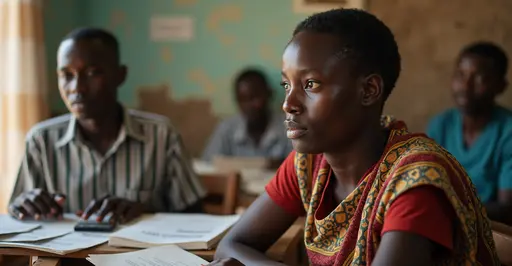Developing nations face mounting debt distress with over half of low-income countries at risk. China's parallel bailout system and failed international frameworks complicate solutions, while traditional aid gets diverted to debt servicing. Urgent reforms needed for sustainable recovery.

The Growing Debt Emergency in Developing Economies
The world's poorest nations face an escalating debt crisis, with over half of low-income developing countries in or near debt distress according to IMF reports. The situation has worsened due to overlapping crises: the COVID-19 pandemic, Ukraine war fallout, and rising global interest rates. Many countries now seek urgent debt restructuring from creditors as foreign reserves dwindle.
Historical Roots of the Crisis
The current crisis traces back to the Heavily Indebted Poor Countries (HIPC) initiative of 1996-2005 which successfully reduced debt burdens. However, the subsequent era of near-zero interest rates created a "search for yield" that flooded emerging markets with loans from diverse creditors including commercial lenders, Eurobond issuers, and China's Belt and Road Initiative. This lending surge created today's unsustainable debt landscape.
The Failed Promise of Debt Relief Frameworks
The G20's 2020 Common Framework for Debt Treatments aimed to streamline restructuring but has faced implementation challenges:
- Lack of clear rules for equitable creditor burden-sharing
- Exclusion of middle-income countries facing similar distress
- China's reluctance to follow traditional restructuring patterns
- Disagreements over loss allocation between creditors
These issues have paralyzed negotiations while collective developing nation debt approaches $9 trillion.
China's Alternative Bailout System
China has established a parallel financial rescue system through:
- PBOC currency swap agreements ($170 billion)
- Direct loans from state-owned banks ($70 billion)
The Hidden Cost of Traditional Aid
U.S. foreign assistance ($75 billion to distressed countries) faces an unexpected challenge: these non-debt-creating grants become leveraged in debt negotiations without donor representation. As the IMF requires countries to boost reserves through "non-debt-creating flows" as a precondition for support, aid dollars effectively subsidize debt workouts rather than funding development programs. This creates perverse incentives where:
- American taxpayer funds indirectly service Chinese/commercial debt
- Fiscal adjustments prioritize creditor repayment over social needs
- Aid loses purchasing power through currency devaluations
Pathways to Sustainable Solutions
Experts recommend these strategic approaches to resolve the crisis:
- Develop aid instruments that provide negotiation leverage
- Enhance transparency in sovereign borrowing practices
- Coordinate closely with finance ministries on debt sustainability
- Create inclusive restructuring frameworks with all stakeholders
- Implement robust monitoring of reserve management
Without coordinated action, debt servicing will continue diverting resources from healthcare, education, and poverty reduction - potentially triggering humanitarian crises and migration waves.

 Nederlands
Nederlands English
English Français
Français Deutsch
Deutsch Español
Español Português
Português






